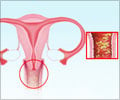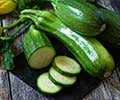Candida Diet Foods - What’s In
Candida diet is a type of diet to cleanse pathogenic Candida microbes from the body. Just as in any other diet, Candida diet too has its restrictions and its favorite foods. Given here are foods that you can eat in Candida diet.
Candida diet must include foods that actually inhibit the growth of the Candida microbes. These foods include cruciferous vegetables such as cabbage, broccoli, turnip and kale. Cruciferous vegetables contain glucobrassicin which, during metabolism, yields a compound indole-3-carbinol. A study published in the Biological and Pharmaceutical Bulletin found that this compound has apoptosis effects that can kill Candida albicans.
Onion and raw garlic are also important in curbing the growth of Candida pathogens suggested a study published in the journal Yeast. The researchers of this study found that garlic contains diallyl disulphide (DADS) which can effectively kill Candida pathogens by eliciting oxidative stress.
Other foods that you can eat are poultry, eggs, fish, seafood, and lean meats. Why? That’s because these are protein foods, so they will not provide food to the yeast as they require sugary food for growth. And if you are a vegetarian, you can substitutes the above foods with lentils, dried peas and beans (lima beans, black eye beans, red kidney beans).
Nuts and seeds such as hazelnut, pecan nut, walnut, sunflower seeds, pumpkin seeds, sesame seeds and poppy seeds are also good alternatives. ‘Nuts are healthy; however, they are tough on the digestive system for Candida sufferers, so they should really be consumed in limited amounts’ says Lisa Richards, a Candida expert.
You can also consume most vegetables except corn and potatoes. Corn and potato are contain sugars and starch and thus won’t help inhibit Candida.
Among grains, non-glutinous grains such as amaranth, buckwheat, millet quinoa and wild and brown rice and their products are in the okay-list. Oat bran is again a very good food since it contains a lot of soluble fiber. Fiber flushes out Candida out of the intestines very quickly as it hastens digestion.
You can eat olives but they should not be stored in white vinegar. Seaweeds such as spirulina and chlorella are also okay.
All cold pressed oils such as olive oil, coconut oil, almond oil, sesame oil, sunflower oil, and safflower oil can be used in the Candida diet. Ghee and organic butter can also be included.
You are allowed to consume milk and plain yogurt. Milk products without sugar are also allowed to certain extent. The use of instant New Zealand goat milk ‘Amalteya’ was found to be highly therapeutic in children with duodenal ulcer associated with Candida species, according to a Russian study published in the journal Experimental & Clinical Gastroenterology.
Similarly, yogurt is also very useful for getting rid of Candida. ‘Yogurt or kefir should be one of your staples during your Candida treatment plan. The friendly bacteria found in these
Products like ricotta cheese, cottage cheese, oat milk, and rice milk are also allowed by most experts.
Among drinks you have the choice of water-filtered decaffeinated coffee, malt-free coffee substitutes, herbal teas, plain and sparkling mineral water, filtered tap water, malt-free soy milk, homemade lemon barley water, and all vegetable juices. You may add stevia and xylitol as sugar substitute.
If Candida symptoms persist even after you follow the Candida diet, consult your health care provider.










